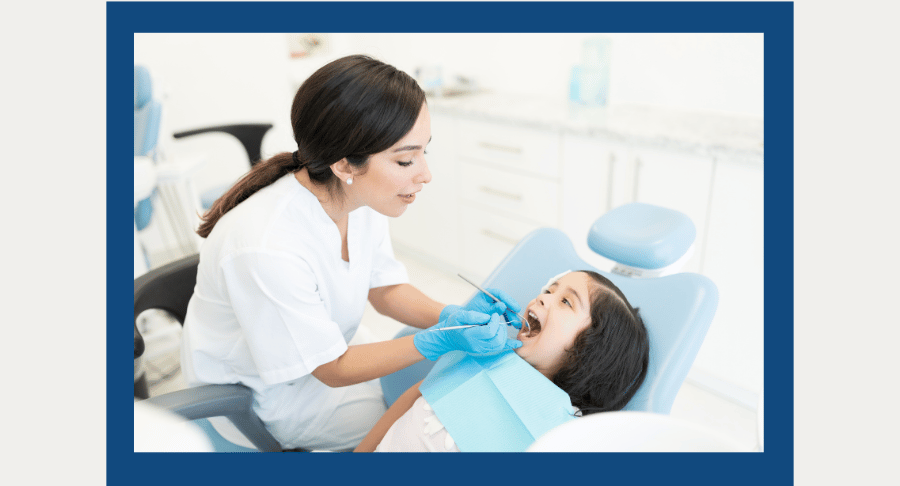
Airway screenings to identify children at-risk and provide treatment to improve a deficient airway has the potential to dramatically grow a dental practice. This is because of the increased awareness among parents and concern for airway and sleep problems in recent years. Routine expansion of the palate and lengthening of the maxillary dental arch have been shown to improve airway and tongue space. In some cases, the improvement can prevent the need for surgery. A lifetime of better breathing truly improves lives. The medical community’s awareness has also recently changed in this regard. Pediatricians, hospitals, and nurse practitioners are now looking for dentists who treat suspected airway problems with non-surgical and non-pharmacological options. Dentists are very well positioned to provide this life-changing care.
There are many reasons why aligners are the ideal treatment choice for an airway-treatment protocol. Repeated studies show that mothers make the majority of healthcare decisions for their children. After approving the treatment, the decision of who will render care may rest with the child. The mother may ask the child if he/she is comfortable with the plan, the doctor, and the staff. Non-threatening, non-invasive, options will be valued most. Treatment modalities that are perceived as gentle and with little-or-no risk will be preferred. Experienced dental office treatment coordinators say, “win the child over and the parents will select our office as their provider.”
The opportunity today is immense to grow your practice with the introduction of aligners for expansion and lengthening of arches for airway issues. Any additional cosmetic problems, tooth position, and bite issues can also be addressed at the same time.
The family dentist and dental hygienist team are ideally positioned to be the “gatekeepers” for initial screening of children for airway problems. The first dental appointment for most children occurs between 6 and 18 months. A medical history taken by the office can include and highlight the signs of less-than-normal growth of the jaws. Crowding of teeth, abnormal bite development, and prevention of decay have been stressed in the past but the time has come where parents will expect attention to the consequences of mouth breathing to take priority.
The discerning parent will recognize and value the larger growth-and-development focus. One or both parents will often have had personal experience with prolonged and difficult orthodontic care as teenagers with subsequent relapse issues combined with greater awareness of the airway-dental-growth connection. Keep in mind, growth studies on children suggest nearly 66% of malocclusions are largely due to inadequate growth of the maxilla and mandible. Additionally, expansion of the palate can increase upper-airway volume by 350% to 450%.
The “Hippocratic Oath” tells us to “do no harm.” When it comes to the care of our patients there is the possibility to “do harm” by inaction. Once our understanding changes due to new or additional information, then we are obligated to change our treatment recommendations to prevent the harm which stems from inaction. Recent CBCT studies relating to palate expansion and improvement in airway combined with growth studies show that we “do harm” if we suggest waiting until more adult teeth erupt and “do no harm” if we begin to improve growth.
Specialty Appliances can assist in the design and complete the fabrication of appliances for your patients with growth deficiency. We have specialists on staff to consult with and the latest technology for sharing your digital scans for impression-free appliance fabrication. In addition, Specialty has support information available for your staff’s delivery of appliances.
Goals of article:
- Review the need for airway screening and history of functional matrix and CBCT research and the critical role of the family dentist and hygienist as the gatekeeper
- Review the parent value proposition (less need for phase 2, less invasive, focused on working with growth and early functional improvement
- Review the 11 hour threshold of tooth movement and after dinner until awaking schedule
- Review the concept of velocity in aligners
- Review the 2/3’s skeletal deficiency
- Show case results 350-450% increase in airway
- Review lower arch expansion from functional matrix change
- Review DO NO HARM oath and concept of harm from both inaction as well as compromised actions or treatment planning
- SA CBCT or other screening assistance services (measurement of teeth to access if they are < normal, normal, >normal size….Bolton mismatch….from review of virtual models compared to norm’s
- SA Expansion aligners designed and prescribed with and fee recommendation as well as delivery instructions or fixed appliance prescription design prescribed

